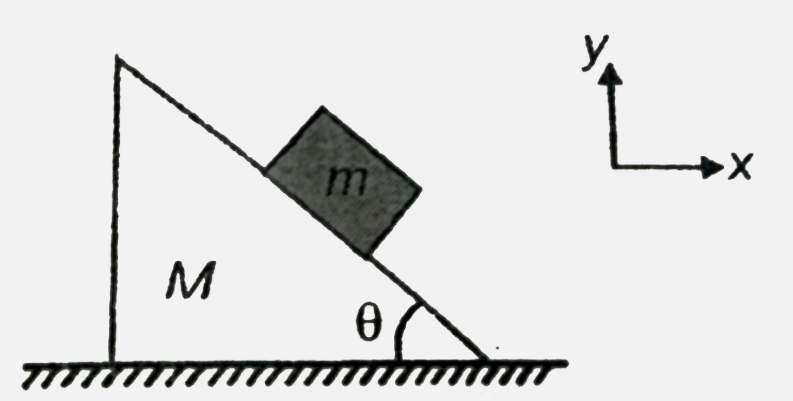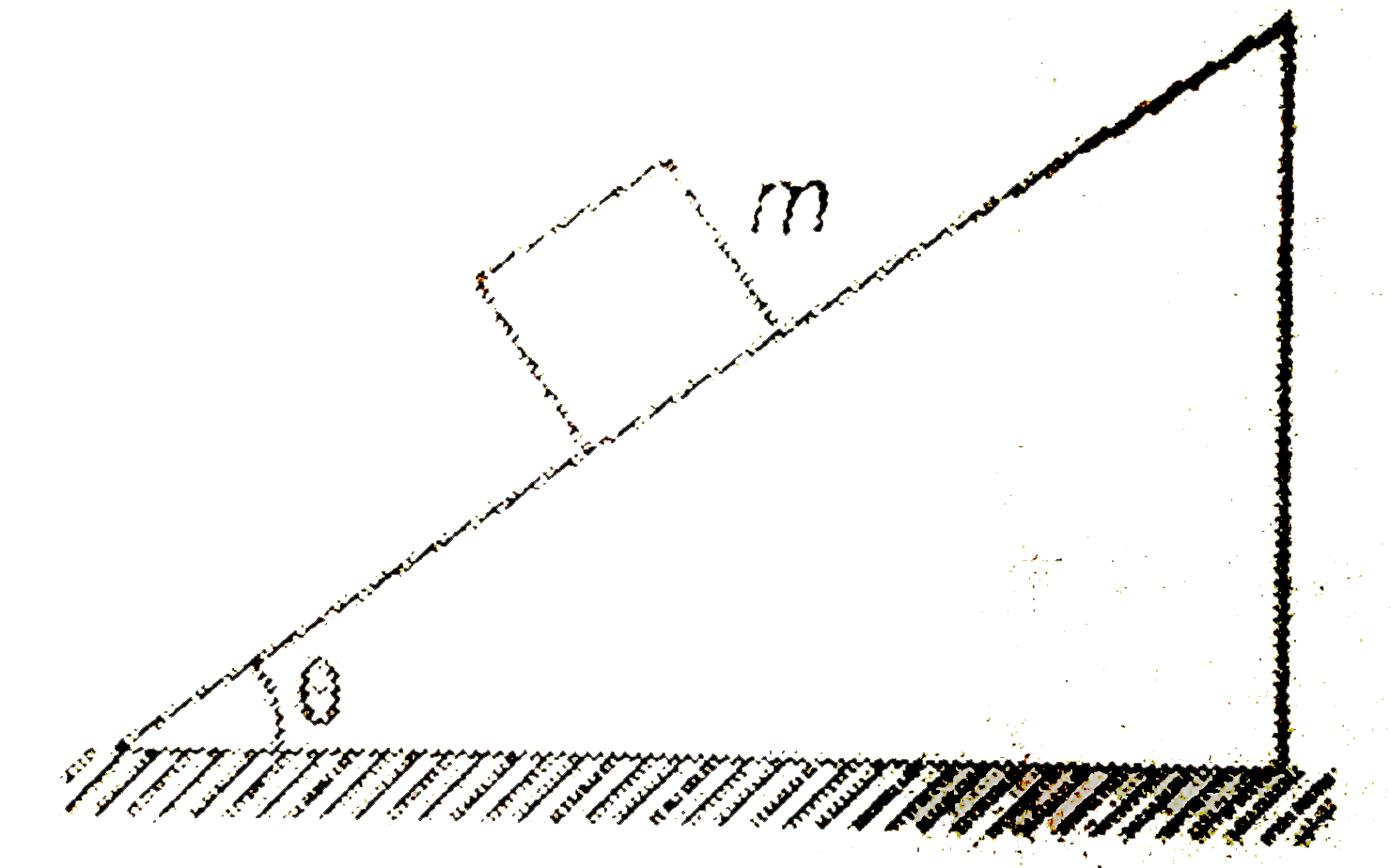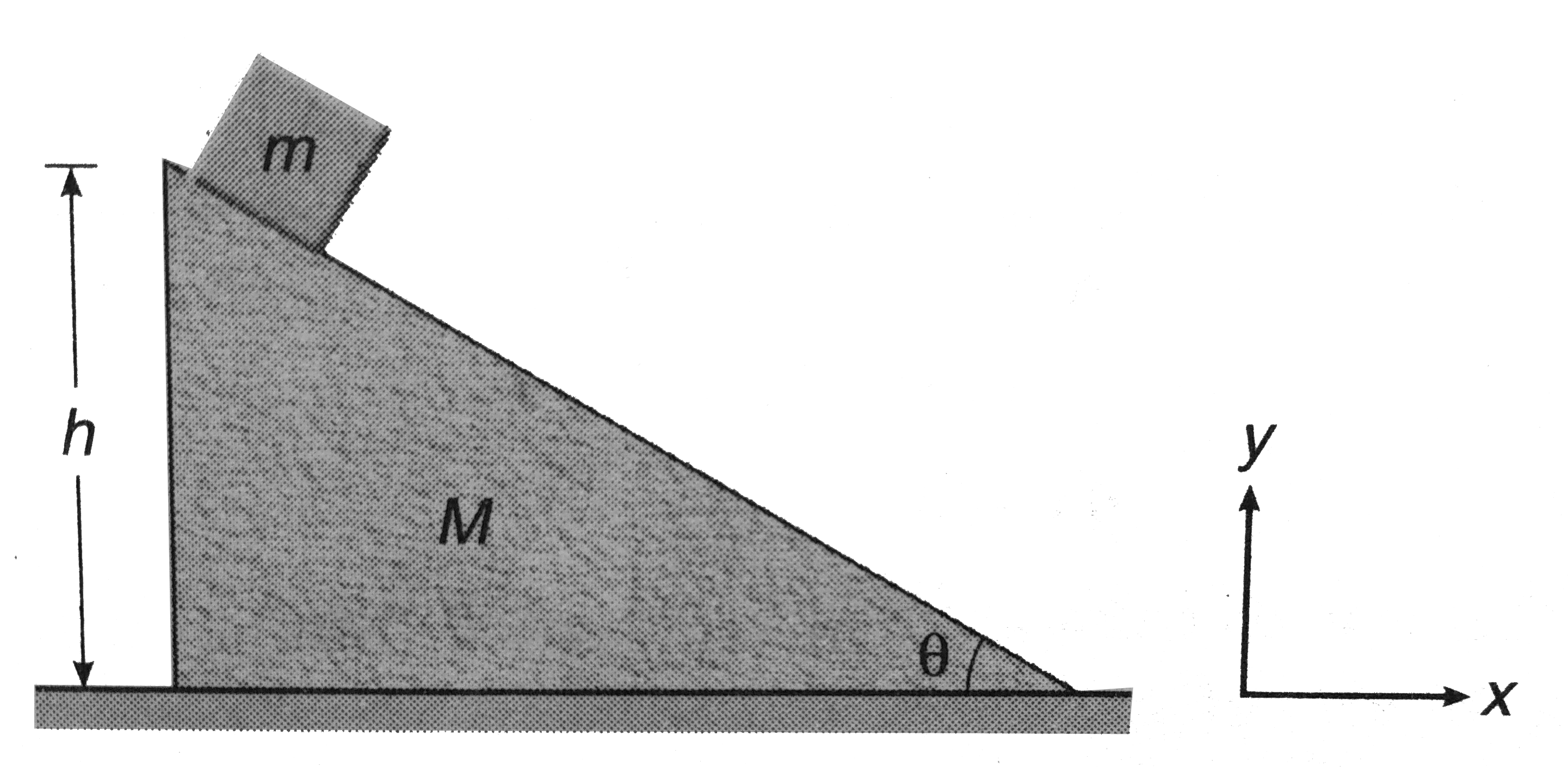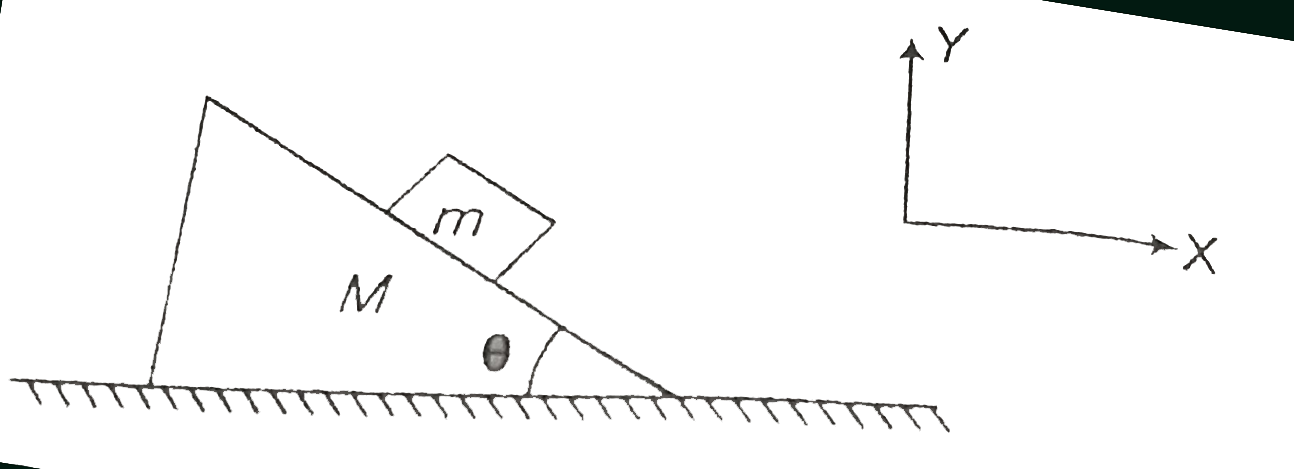A block of mass m is released from the top of a wedge of mass M as shown in figure. All the surface are smooth. Let N be the normal reaction between the ground and the wedge then : A N = M + mg B N > m + M g C N < M + mg D N ≤ M + mg
C N < M +mg
Related Solutions
A block of mass 'm' is placed on wedge of mass 'M'. If all the surfaces are smooth

Normal reaction between the wedge and block isView SolutionA block of mass 1 kg is at rest relative to a smooth wedge leftwards with constant acceleration a =5 m//s^(2) .Let N be the normal reaction between the block and the wedge. Then ( g = 10 m//s^(2) )
View SolutionA wedge of mass M lies on a smooth fixed wedge of inclination theta . A particle of mass m lies on the wedge of mass M in the figure. All surfaces are frictionless and the distance of the block from the fixed wedge is l . Find. (a) Normal reaction between m and M (b) the time after which the particle will hit the fixed plane.
View SolutionA wedge of mass M lies on a smooth fixed wedge of inclination theta . A particle of mass m lies on the wedge of mass M in the figure. All surfaces are frictionless and the distance of the block from the fixed wedge is l . Find. (a) Normal reaction between m and M (b) the time after which the particle will hit the fixed plane.
View SolutionA block of mass m is placed on a smooth wedge of inclination theta & mass M. The whole system is slip on the wedge. Then the normal reaction on the wedge acting from the ground :
View SolutionA smooth block of mass is held stationary on a smooth wedge of mass and inclination as shown in figure .If the system is released from rest , then the normal reaction between the block and the wedge is
 View Solution
View SolutionA smooth block of mass m is held stationary on a smooth wedge of mass M and inclination theta as shown in figure .If the system is released from rest , then the normal reaction between the block and the wedge is
View SolutionA block of mass 1 kg is at rest relative to a smooth wedge moving leftwards with constant acceleration a = 5 m//s^(-2) .Let N be the normal reation between the block and the wedge . Then (g = 10 m//s^(-2))
View SolutionA block of mass is at rest relative to a smooth wedge moving leftwards with constant acceleration .Let be the normal reation between the block and the wedge . Then
 View Solution
View SolutionA block of mass m is placed on a smooth wedge of mass M, as shown in the figure . Just after placiing block m over wedge M.
 View Solution
View SolutionA smooth wedge of mass M is pulled towards left with an acceleration a= g cot theta on a horizontal surface and a block of mass m is released w.r.t. wedge. Then answer the following Normal reaction offered by ground to the wedge is
View SolutionA block of mass 'm' is placed on wedge of mass 'M'. If all the surfaces are smooth

Accelaration of wedge 'A' isView SolutionA block of mass m is at rest on wedge as shown in figure. Let N be the normal reaction between two and f the force of friction, then choose the wrong option.
View SolutionA block of mass m is at rest on wedge as shown in figure. Let N be the normal reaction between two and f the force of friction, then choose the wrong option.
 View Solution
View SolutionA block of mass m is released from the top of a wedge of mass M as shown in figure. Find the displacement of wedges on the horizontal ground when the block reaches the bottom of the wedges. Neglect friction everywhere.
 View Solution
View SolutionA block of mass m is released from the top of a wedge of mass M as shown in figure. Find the displacement of wedges on the horizontal ground when the block reaches the bottom of the wedges. Neglect friction everywhere.
View SolutionIn the Fig. shown, mass 'm' is being pulled on the incline of a wedge of mass M. All the surface are smooth. Find the acceleration of the wedge.
View SolutionConsider the shown arrangement. Assume all surfaces to be smooth. If N represents magnitudes of normal reaction between block and wedge, then acceleration of M along horizontal is equla to
 View Solution
View SolutionTwo blocks of equal masses m are released from the top of a smooth fixed wedge as shown in the figure. Find the magnitude of the acceleration of the centre of mass of the two blocks in if
 View Solution
View SolutionA block of mass m is placed at rest on a smooth wedge of mass M placed at rest on a smooth horizontal surface. As the system is released
View Solution
